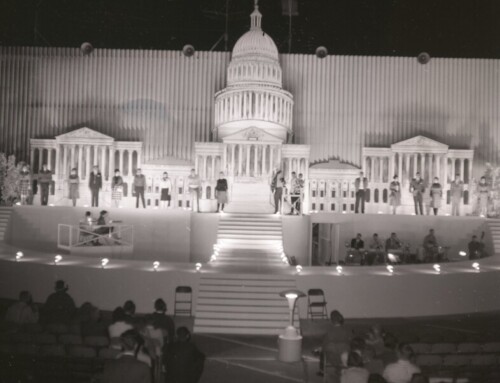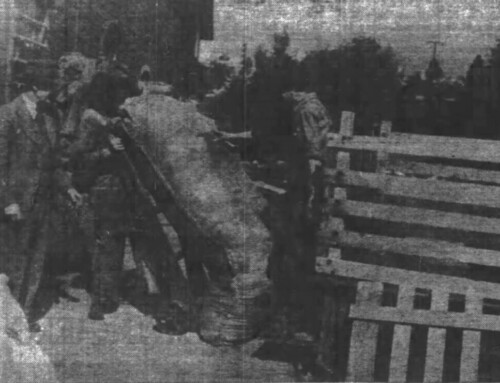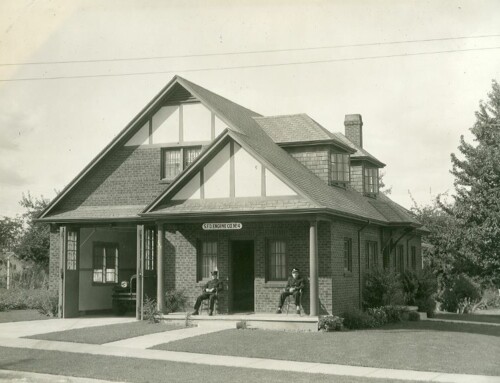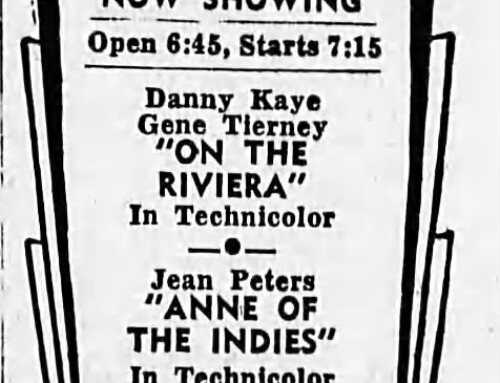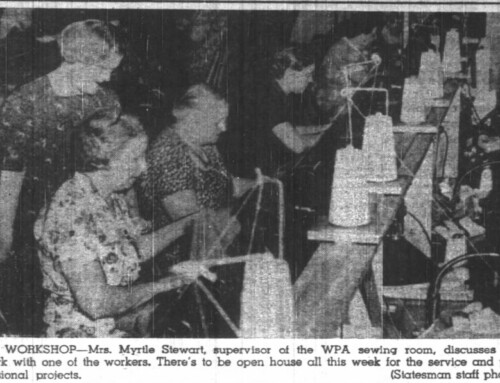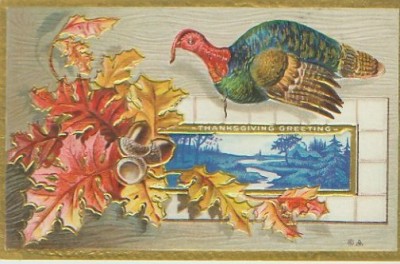
Thanksgiving postcard from the turn of the Thanksgiving greeting from the turn of the century WHC 2011.037.0268
In anticipation of delicious Thanksgiving meals and communal gatherings ahead, it seemed appropriate to relive a Thanksgiving long ago through the eyes of 6-year-old Beatrice Crawford. The year was 1901, the setting the schoolhouse in the rural community of Marion located south of Turner. The building was heated by wood stove and lit with oil lamps. The children’s desks and seats were made of split cedar slabs. As the center of social life for the community and largest building, the school was the logical place to host the community Thanksgiving feast.
According to Beatrice’s account, the Thanksgiving celebration began the day before the holiday for the school children. Near the end of class that day a special delivery arrived via horse and buggy. One of the mothers had brought a treat of ripe, juicy apples and sugary popcorn balls. The children ate them down to the last sticky bits while seated at their desks. Then in Beatrice’s words, “followed a trek to the water pump outside to wash off the sticky from our fingers – one would pump while one washed, then take the turn. Waved in the fresh air, they dried. Of course, we didn’t have towels, or paper napkins.”
Early Thanksgiving morning the men of the school board brought in long, two-by-twelve planks and placed them on top of the first two rows of student seats and desks, creating tables for the food. Space for a quite a spread, because they were at least twenty feet long. Ladies brought white linen tablecloths to cover the twenty-foot lengths, freshly ironed by heating flat irons on top of the wood stove. Each being white they would match they thought, and look like one.
Mind you, the only things about that dinner that were store bought, were sugar, coffee, tea, salt and spices. Let’s turn again to Beatrice’s description, “Try to imagine a dozen or more roast turkeys, brown and bursting with savory stuffing (the sage grew in everyone’s garden), scattered around among many, many baked smoked hams, crowded by platters the size of trays piled high with fried chicken, cold sliced roast pork and beef on separate mounds, all surrounded by spare ribs, coleslaw in buckets, parsnips in butter, mashed potatoes in the biggest serving dishes they had, with gravy in the original roasting pans, beet pickles, dills and sweets, cottage cheese and stuffed prunes, bunched celery stalks in tall vase-like containers, hard cooked fresh eggs in market baskets, some more of these stuffed and surrounded with parsley and watercress (called pepper grass). Hot yeast rolls, sweet butter, crabapple jelly, wild strawberry jam and comb honey were merely among things present.”
The dessert table was created in a similar fashion with wood planks that were shorter in length placed across the teacher’s desk and work tables on the rostrum. Imagine pies of every fruit, mince and pumpkin. Layer cakes, pound cakes, fruit cakes, sponges, jellyrolls and tarts and Beatrice’s favorite “floating island” pudding which was a heavenly meringue on a smoother-than-ice custard sauce. Walnuts and hazelnuts gathered from the woods with a wooden bucket of hard candy donated by the local storekeeper rounded out the delectable choices. Apple cider waited in barrels and coffee for grown-ups boiled in five-gallon cans stood on the wood stove.
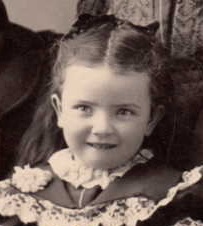
Beatrice Crawford – with permission from the Richard Brown family | Ancestry.com
People sat where they could in the uncovered student seats or on the platform step that ran across the front of the rostrum. Most of the children sat on the floor. Beatrice later wrote, “at the first glimpse of all this I had one tiny pang – the certain knowledge that I could never taste everything there and how I wished I was bigger so I could hold more.”
Beatrice paints a mouth-watering Thanksgiving memory with her words and the smells and tastes they evoke. It is not hard to imagine yourself in the Marion school with her and the rest of her family, friends and neighbors. Her memories and story-telling skill allow us a brief visit back in time to connect with the rich history of our area.
This article was written by Kaylyn Mabey for the Statesman Journal where it was printed 18 November 2018. It is reproduced here with sources for reference purposes.
Sources:
1. “Help Yourself, There’s Plenty”, Beatrice Crawford Drury, WHC 2012.007.0010



